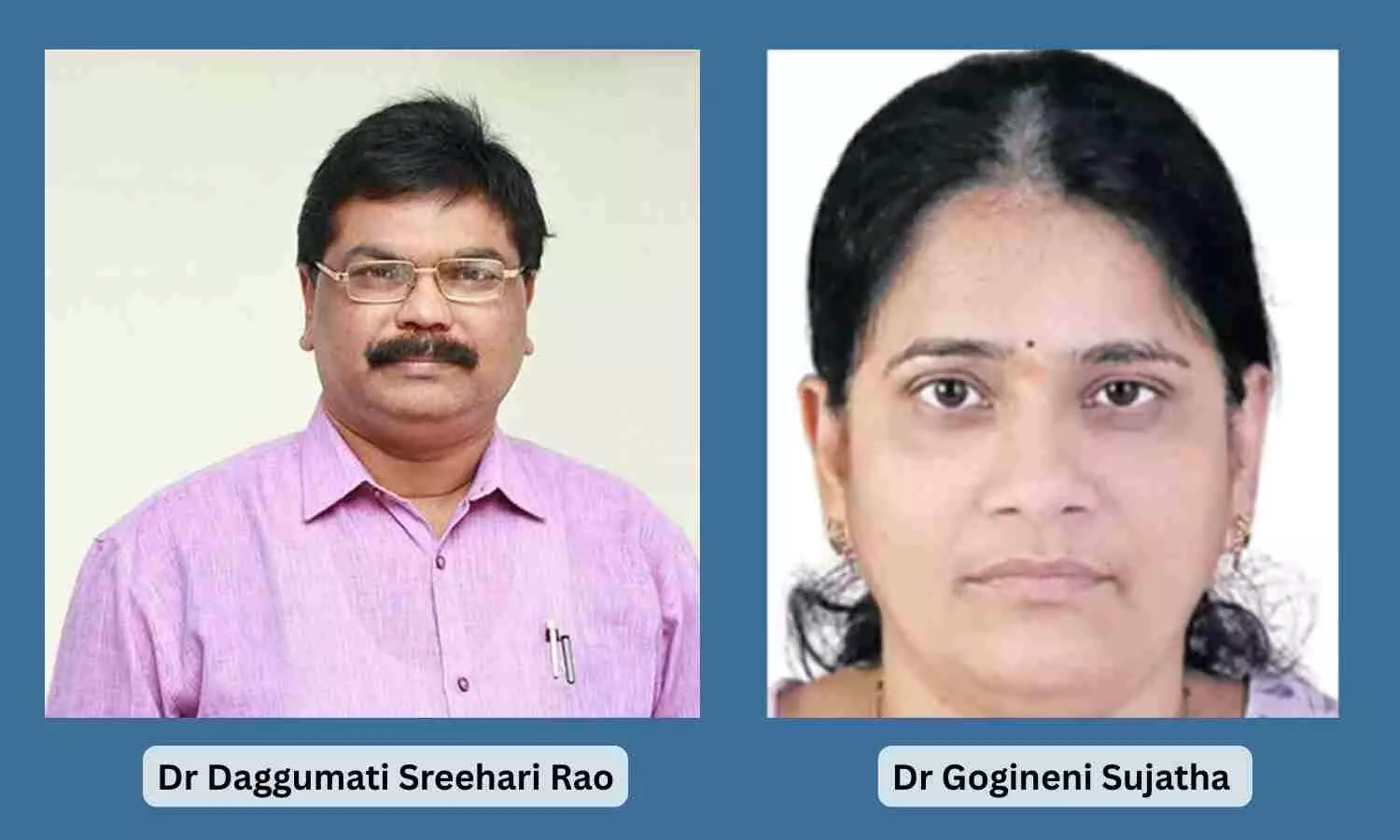Cannabis-related hospital visits rising, often tied to mental health conditions: Study
Powered by WPeMatico
Powered by WPeMatico
Powered by WPeMatico
Powered by WPeMatico
Powered by WPeMatico
Powered by WPeMatico

Thiruvananthapuram: Kerala State Human Rights Commission on Tuesday directed the formation of a medical team under the Director of Medical Education to investigate the recent deaths due to rabies infection.
Commission Chairperson Justice Alexander Thomas directed the proposed team to submit a report in this regard within one month.
According to the PTI report, in the order, the panel said the medical team should investigate whether those who died of rabies recently had taken the preventive vaccine, whether the vaccine protocol was followed, the effectiveness of the vaccine administered to them, and whether the vaccines were stored properly.
The investigation report should also have details about the steps to be taken to prevent tragic incidents from recurring in the future, it said.
Also Read:Kerala: Despite taking rabies jab, 6-year-old girl bitten by dog dies
The commission also asked the Additional Chief Secretary of the Health department to submit a report on the effectiveness of the vaccine used in government hospitals.
It should also be checked whether the rabies vaccines used in Kerala meet the quality standards prescribed by the National Centre for Disease Control (NCDC) under the Union Ministry of Health, the order further said.
The report should also indicate which agency is capable of testing and studying the quality of the rabies vaccine, it said.
Justice Alexander Thomas asked the government to consider appointing an agency, as recommended by the NCDC, to study recent rabies death cases and recommend preventive measures.
The Additional Chief Secretary (Health) must submit a report within one month on the implementation of the instructions, it said, reports PTI.
The Deputy Director of Medical Education and a representative of the Health Secretary should be present at the sitting to be held at the Commission’s office here on June 10, an official statement said.
The order was issued in a case registered on its own by the Commission based on media reports about the recent rabies deaths.
The directive came a day after a seven-year-old girl, Niya Faisal, a native of Kollam district, breathed her last at a state-run hospital here in the early hours of Monday.
Niya’s tragic demise happened just days after a six-year-old girl in Malappuram district, Ziya Faris, died of rabies despite having received vaccination.
A 13-year-old girl, hailing from Pullad in Pathanamthitta, also succumbed to the infection, recently after receiving prescribed vaccine doses.
Medical Dialogues team had earlier reported that in an unfortunate incident, a six-year-old girl receiving treatment at the Government Medical College Hospital (GMCH) in Kerala’s Malappuram district died of rabies, a month after being bitten by a stray dog, despite having received preventive vaccination, family sources said.
Also Read:Video: Dogs seen playing with skull near MP Medical College, Probe ordered
Powered by WPeMatico

Jaipur: In a big step towards improving hospital infrastructure, the Rajasthan government has introduced a new Standard Operating Procedure (SOP) for government medical colleges and hospitals. The SOP, developed jointly by the Medical Education and Public Works Departments, aims to improve patient safety and ensure timely hospital maintenance.
It was issued based on the directives of Chief Minister Shri Bhajanlal Sharma and Medical Minister Shri Gajendra Singh Khimsar. Under this new SOP, each hospital will now have a full-time Public Works Department (PWD) unit. This team will include plumbers and electricians available around the clock. Carpenters and welders will work during the day. A 24-hour helpline will also be launched for complaints related to maintenance or patient safety.
Also read- Formulate SOP for medical termination of pregnancy beyond 24 weeks: Bombay HC tells Maha Govt
Medical Education Secretary Ambrish Kumar told TOI that 2% of the building’s construction cost will be given every year to the PWD for upkeep. This money will come through the Rajasthan Medical Relief Society (RMRS). For the year 2025–26, the building cost will be calculated at Rs 28,000 per square metre.
Out of the total funds, 70% will go toward civil work like plumbing or repairs, while 30% will be used for electrical work. However, these figures can change if approved by the hospital superintendent and the RMRS chairman.
The PWD will also take care of maintenance contracts for important equipment such as air conditioners, generators, oxygen pipelines, lifts, fire alarms, and CCTV cameras. Hospitals will pay for these services from their budgets or through RMRS.
Patients or staff can register complaints using the helpline, website, or mobile app. Contractors, under PWD’s watch, will handle the issues. Payment will be made only after a hospital medical officer checks and confirms the work.
Every year, the PWD will conduct a structural survey of hospital buildings and issue a fitness certificate. Maintenance will be prioritised based on safety, with urgent attention given to issues like leakages, electrical problems, tree root damage, and broken fixtures.
Also read- Stipend, faculty, work hours! NMC to roll out SOPs to to address grievances
Powered by WPeMatico

Vijayawada: In a latest development, the Andhra Pradesh Health Department has appointed renowned radiologist Dr Daggumati Sreehari Rao as the new Chairman of the Andhra Pradesh Medical Council, with Dr Gogineni Sujatha named as the Vice-Chairman.
Previously, Medical Dialogues reported that six newly appointed interim members of the Andhra Pradesh Medical Council, including Dr Rao and Dr Sujatha, took their oath at Dr. NTR University of Health Sciences. Health Minister Y. Satya Kumar Yadav, the chief guest for the ceremony, administered the oath and congratulated them on their new roles.
The newly sworn-in members are Dr. Gogineni Sujatha, MD (Pulmonology) and Professor at Pinnamaneni Siddhartha Institute of Medical Sciences and Research Foundation, Vijayawada; Dr. Kalavakollu Venkata Subba Naidu, Professor of Pulmonology from Ongole; Dr. Daggumati Srihari Rao, a Radiologist and former Vice-Chairman of APSMC, Tirupati; Dr. Swarma Geetha, a Gynecologist from Podili, Prakasam district; Dr. S. Kesava Rao Babu, President of IMA, Vijayawada; and Dr. Chunduri Malliswari, a Doctor of Medicine from Bhimavaram.
Also read- 6 Interim Members of AP Medical Council Sworn In
Health Special Chief Secretary M.T. Krishna Babu had previously assured that a chairperson would soon be appointed from among the appointed interim members. Keeping his assurance, the government has now selected two of them to serve as the new chairman and vice-chairman of the council.
Dr. Daggumati Sreehari Rao, a native of Kavali in Nellore district, is a radiologist based in Tirupati. With nearly three decades of experience in the field, he has been operating Sri Sai SV Diagnostics in Tirupati since 1997, after a brief tenure at SVIMS Hospital, reports The Hans India.
Dr Rao was also a leading candidate for the Tirupati Lok Sabha seat in the last elections. He previously served as Vice Chairman of the AP Medical Council and has held prominent roles in various medical associations. He also served as the national vice-president of the Indian Medical Association (IMA) and was also state president of IMA. He had also led the AP Nursing Homes and Hospitals Association. Currently, Dr Rao is the president-elect of the Indian Radiologists Association (IRA).
Speaking to Medical Dialogues, Dr Daggumati Sreehari Rao, who will take charge of the council from tomorrow, said, “My team members and I at APMC will collectively take decisions and work together as a team. Our priority is to streamline the existing system within APMC. The council is expecting improved communication and a functional helpline system. We will work to rectify these issues promptly. Additionally, efforts will be made to simplify the online upload process.”
“Tomorrow, we will discuss the issues related to Foreign Medical Graduates (FMGs) and the latest court decision on the matter. We also plan to reduce the required credit hours for senior citizen doctors. Another initiative is the implementation of gold medal presentations to meritorious final-year students of NTR University of Health Sciences and at the college level. We aim to organise zonal conferences in each zone, and APMC itself will issue credit hours for participation. A national conference for all medical councils across India is also being planned. To expedite the renewal process, we will arrange district-level renewals weekly until all 55,000 APMC member renewals are completed,” he added.
Powered by WPeMatico

Israel: A real-world analysis has provided new insights into the kidney-protective effects of sodium-glucose cotransporter-2 inhibitors (SGLT2i) in patients with diabetes and an insulin-deficient phenotype.
The findings, published in Diabetes, Obesity and Metabolism, suggest that SGLT2 inhibitors slowed kidney function decline by 21% (HR 0.79) in insulin-deficient diabetes patients over 4.5 years. Users also had a lower risk of serum creatinine doubling (HR 0.76) and showed improvements in albuminuria, with 51% achieving normoalbuminuria. Although the risk of diabetic ketoacidosis was slightly higher (2.81% vs. 2.19%), the overall incidence remained low, reinforcing the renal benefits of SGLT2 inhibitors.
Chronic kidney disease (CKD) is a serious complication of diabetes, often progressing to diabetic kidney disease (DKD) and increasing the risk of kidney failure. While SGLT2 inhibitors are known for their cardiovascular and renal benefits in type 2 diabetes, their effectiveness in insulin-deficient patients remains uncertain. Given the high risk of DKD in this population, understanding the kidney-protective effects of these medications is crucial. However, limited data exist on their impact, emphasizing the need for further research to explore their potential benefits and optimize treatment strategies for high-risk patients.
To fill this knowledge gap, Anat Tsur MD, Department of Endocrinology and Metabolism, Clalit Health Services, Jerusalem, Israel, and colleagues aimed to examine the effect of SGLT2 inhibitors on kidney outcomes in insulin-deficient diabetes patients using real-world data.
For this purpose, the researchers conducted a retrospective cohort study using data from a large Health Maintenance Organization in Israel. They analyzed 12,530 propensity score-matched adults with insulin-deficient diabetes, categorizing them into SGLT2i users and non-users, with a median follow-up of 1,657 days. The primary outcome was a composite measure of a ≥50% decline in eGFR to <60 mL/min/1.73 m² or progression to eGFR <15 mL/min/1.73 m². Secondary outcomes included serum creatinine doubling and changes in albuminuria status.
The study revealed the following findings:
This study provides strong evidence that SGLT2 inhibitors offer significant kidney protection in insulin-deficient patients, extending benefits beyond type 2 diabetes. The consistent improvements in albuminuria and slower eGFR decline suggest their potential as a valuable treatment option for high-risk populations. However, the slightly increased risk of diabetic ketoacidosis highlights the need for careful monitoring and patient education.
“These findings address a critical gap in diabetes management, emphasizing the importance of further large-scale trials to validate their role in reducing the burden of diabetic kidney disease in insulin-deficient individuals,” the authors concluded.
Reference:
Tsur A, Cahn A, Hanoch L, Pollack R. Kidney outcomes with SGLT2 inhibitors in patients with diabetes and an insulin-deficient phenotype: A real world analysis. Diabetes Obes Metab. 2025 Mar 14. doi: 10.1111/dom.16329. Epub ahead of print. PMID: 40084557.
Powered by WPeMatico

China: A recent study published in Scientific Reports has highlighted the significant relationship between the triglyceride-glucose (TyG) index and microcirculatory resistance (AMR) in patients with type 2 diabetes mellitus (T2DM) and ST-elevation myocardial infarction (STEMI) undergoing primary percutaneous coronary intervention (pPCI).
The research suggests that the TyG index, a simple yet effective marker of insulin resistance, could be a valuable predictor of elevated AMR in this cohort.
AMR, a key factor influencing coronary microvascular dysfunction, has long been associated with poor outcomes in STEMI patients. In patients with T2DM, the presence of microvascular damage complicates the treatment and recovery process, potentially leading to a worse prognosis following pPCI. The TyG index, calculated using fasting triglyceride and glucose levels, is increasingly recognized as a marker for assessing insulin resistance and metabolic dysfunction.
Against the above background, Li Zhu, Department of Cardiology, The Affiliated Taizhou People’s Hospital of Nanjing Medical University, Taizhou, Jiangsu, People’s Republic of China, and colleagues aimed to investigate the relationship between the TyG index and the AMR in patients with type 2 diabetes mellitus and ST-segment elevation myocardial infarction.
For this purpose, the researchers consecutively recruited 168 patients with type 2 diabetes mellitus and STEMI who underwent primary percutaneous coronary intervention at Taizhou People’s Hospital between January 2022 and December 2023. The patients were divided into two groups based on their microcirculatory resistance: a low AMR group (AMR < 2.5) and a high AMR group (AMR ≥ 2.5). The TyG index was calculated using the following formula: ln [plasma triglyceride (mg/dL) × fasting blood glucose (mg/dL)/2].
The study led to the following findings:
The researchers acknowledged several limitations in their study. It was a single-center, retrospective analysis, which could introduce selection bias and limit the generalizability of the findings. Additionally, the small sample size constrained the statistical power to detect subtle associations. The measurement of AMR using a single angiographic view, though validated, may also limit the accuracy of the results.
The researchers further noted, “Fluctuations in triglyceride and fasting blood glucose levels during hospitalization or follow-up were not assessed, which could influence microcirculatory resistance. While the TyG index is convenient for clinical use, it is less specific than direct insulin measurement methods.”
They concluded, “Although the TyG index appears linked to microcirculatory resistance in diabetic STEMI patients, further research in larger, more diverse cohorts is needed to confirm these findings and explore the mechanisms underlying insulin resistance and microcirculatory dysfunction.”
Reference:
Wang, G., Xu, C., Wang, J., Teng, Z., Sha, X., Xu, K., Wang, R., & Zhu, L. (2025). Triglyceride-glucose index is associated with microcirculatory resistance in patients with type 2 diabetes and STEMI undergoing primary PCI. Scientific Reports, 15(1), 1-9. https://doi.org/10.1038/s41598-025-89269-6
Powered by WPeMatico
